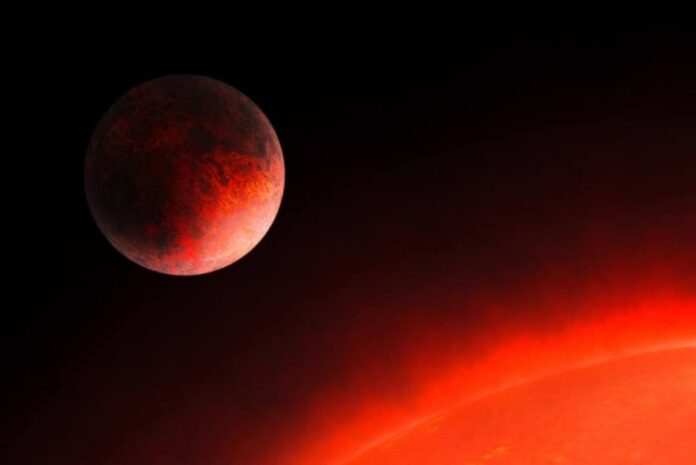An international team of astronomers conducted radial velocity (RV) follow-up observations of the GJ 367 planetary system, utilizing the High Accuracy Radial velocity Planet Searcher (HARPS). As a result, they made a noteworthy discovery of two additional exoplanets, each at least four times more massive than Earth. The findings were reported on the pre-print server arXiv on July 18.
GJ 367, situated approximately 30.7 light years away, is a bright star classified as M1.0 V, boasting nearly half the size and mass of our sun. Notably, it already hosts an ultra-short-period (USP) sub-Earth exoplanet, GJ 367 b, which was initially discovered in 2021. This unique sub-Earth planet completes an orbit around its host star in under eight hours, boasting a radius of roughly 0.72 Earth radii and an estimated mass of 0.55 Earth masses.
The team, led by Elisa Goffo from the University of Turin in Italy, has now unveiled that GJ 367 b is accompanied by two low-mass companions. This discovery emerged from an extensive radial velocity campaign employing the HARPS spectrograph, supplemented by observations from NASA’s Transiting Exoplanet Survey Satellite (TESS).
The closer of the two newfound planets, designated GJ 367 c, exhibits a minimum mass of 4.13 Earth masses and an estimated radius of 1.6 Earth radii, completing an orbit around its host star every 11.5 days. Meanwhile, the outermost planet in the system, GJ 367 d, showcases a minimum mass at least six times that of Earth, and its orbital period spans approximately 34 days, with a predicted radius of around 1.7 Earth radii.
Additionally, the study resulted in more refined determinations for GJ 367 b’s mass and radius. The planet was found to have a mass of approximately 0.63 Earth masses and a radius of 0.7 Earth radii, leading to an ultra-high density of 10.2 g/cm3 and suggesting the presence of an iron core.
In summary, the researchers highlighted that GJ 367 stands as one of the few well-characterized multiplanetary systems hosting a USP exoplanet, with GJ 367 b currently being recognized as the densest and smallest ultra-short-period planet documented to date. Consequently, further observations of the GJ 367 system and its planets hold promise for providing valuable insights into the formation of such systems.
The astronomers concluded by emphasizing the significance of this unique multiplanetary system, particularly due to its ultra-high density, and highlighted its potential as an extraordinary target for advancing our understanding of the formation and migration mechanisms involved in USP systems.
Reference:
Elisa Goffo et al, Company for the ultra-high density, ultra-short period sub-Earth GJ 367 b: discovery of two additional low-mass planets at 11.5 and 34 days, arXiv (2023). DOI: 10.48550/arxiv.2307.09181
